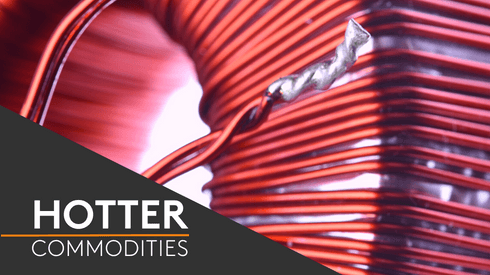China is undergoing a process of liberalising its economy, and as the market opens up, new contracts will be launched to meet the demand, says Newedge’s John Browning in an article written for and published by Metal Bulletin’s sister publication Futures & Options World (FOW).
As China in recent years moved to a for-profit economic model, expansion was often restricted by regulation to a narrow range of state-owned companies. The strength of regulation arguably led the development, profit and income distribution throughout the Chinese economy to become uneven.
To address these issues within the Chinese economy we can expect further liberalisation and a lighter regulatory touch. It seems every day further changes are being made; the recent widening of the trading range around the USD renminbi exchange rate from 0.5% to 1.00% is the most prominent.
As regulation is removed, we will see more mid-sized companies emerging from China requiring access to international markets. Additionally, access will be extended to international companies wishing to access China. However a new range of products will have to be developed to accommodate this change, for example, USD-renminbi FX products to manage the newly identified FX risk.
The commodity markets are driven by different dynamics than the international finance market place – consumer and investor demand offset by producer supply. However prices are nuanced by issues of location, brand/quality and when the commodity is required or available.
Copper in Shanghai trades at a different price to a similar brand in Rotterdam, for example. It is around the trading of these arbitrages that the merchant community exists. A rising tide of demand in one commodity will lift all boats, but within that commodity some futures contracts will rise faster than others. All commodity contracts are regional, but with an overarching global connectivity.
In Hong Kong. licensed banks started to offer renminbi deposit taking, currency exchange and renminbi remittances services in February 2004. In recent years renminbi deposits have boomed.
The Hong Kong Monetary Authority recently announced that renminbi deposits in Hong Kong stood at 576 billion ($91.43 billion). Renminbi is freely available in Hong Kong, many high street ATMs will offer renminbi alongside the usual Hong Kong dollar. Indeed there is enough renminbi in Hong Kong to provide a renminbi settlement mechanism outside the mainland.
So what will happen when these three issues collide, as indeed they are? A number of actors are seeking to provide a solution.
The most far advanced is the fledgling Hong Kong Mercantile Exchange (HKMEx), which is planning to launch a suite of commodity contracts indexed on renminbi prices in Shanghai.
Initial and variation margin will be paid in USD. Middle and back office software which supports the dual currency of the contracts is currently under development and we expect to see the HKMEx product to come to market in October.
Within futures circles, the Hong Kong Exchange (HKEx) is primarily known as an equity exchange and as a prospective buyer of the LME. HKEx maintains that if it is able to buy the LME then LME members will benefit as HKEx brings access to China.
Certainly better access is being prepared independent of the HKEx. But in any event HKEx will continue to focus on launching Asia-regional and China-specific commodity contracts in renminbi.
HKEx is preparing a renminbi currency futures contract that is physically settled with USD and renminbi passing forward and back from clients’ accounts in Hong Kong.
The Shanghai Futures Exchange (SHFE) is enormously influential in the metals market alongside the LME and Comex. But, access to SHFE is not currently open to all. Instead access is confined to a small number of western companies that have achieved the required permissions and have access to renminbi funds.
They comprise almost exclusively a small number of western merchant houses, as these companies can demonstrate that they need access to SHFE and renminbi to facilitate servicing their China-based clients.
However, the most surprising development is that the Shanghai exchange is currently planning to launch a crude oil contract that will be margined in USD and renminbi. The contract will be the first to offer access to global investors though clear rules are still in preparation.
To trade this contract, clients of FCMs such as Newedge probably via its joint venture with CITIC (Citic-Newedge) will be offered access to the China markets directly without having to have an onshore presence in China as is currently required.
The merchant community is adept at trading in multiple currencies. However plain vanilla investors or hedge funds may have issues. They should prepare their middle and back office for contracts indexed in renminbi but settled in USD. Those that want to go further may want to prepare for physical settlement of contracts in renminbi by opening renminbi accounts in Hong Kong.
In the longer term, the core driver of world commodity prices will undoubtedly include a far larger element of renminbi. At present China carries some $2.8 trillion in dollar reserves and will be cautious about actions that affect the value of the dollar.
It is appropriate that institutions in the Asia region work to identify the products that these emerging Chinese corporate require.
What is also clear is that the hegemony of commodity trading based in USD at least in the Asia region is under threat.
And this is not unreasonable; China consumes 40% of the world’s metals, why should those contracts not be priced in renminbi?
John Browning is head of metals at Newedge, Hong Kong. This article first appeared in FOW, which covers the global derivatives and risk management industry. It has been covering futures and options since its launch in 1982.





